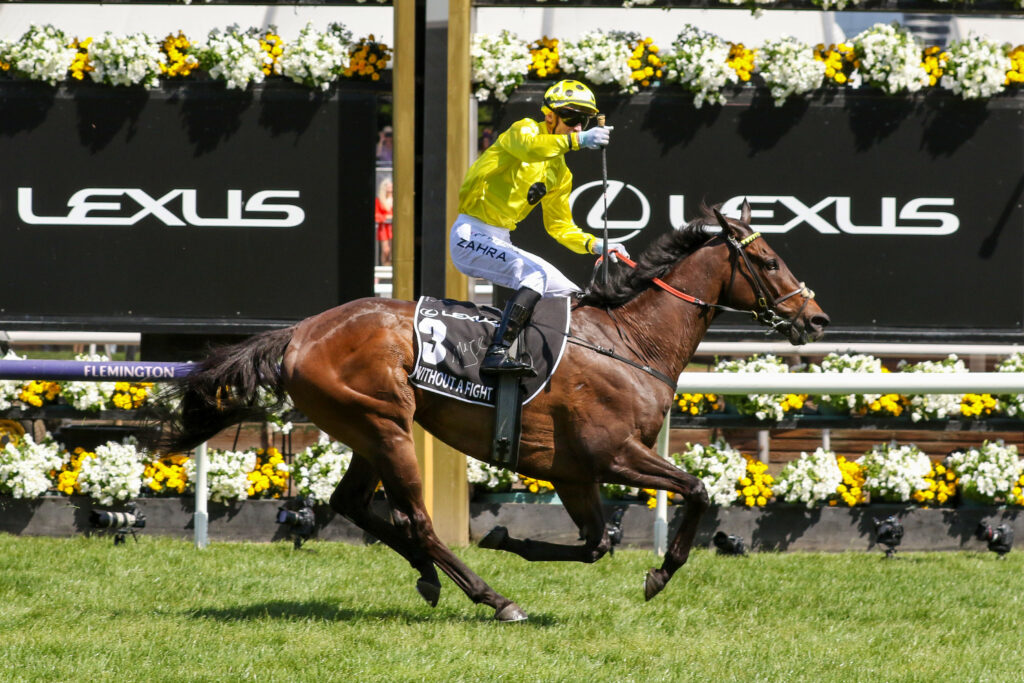Glaring truth about Melbourne Cup amid news about horse that finished second-last

- by Admin
- November 5, 2024
Racing Victoria (RV) vets were slammed by several trainers in the lead-up to the Melbourne Cup after four horses were ruled out of the great race. But after no serious injuries once again came from the race that stops the nation, RV’s veterinary protocols are clearly working.
Muramasa and Brayden Star were both withdrawn after RV vets declared the stayers were at a ‘heightened risk of injury’ if they were to run in the 3200m feature race at Flemington. The decision infuriated the Busuttin-Young stable who believed their runners, in particular Brayden Star, were in good condition to compete.
“(We) welcome the processes put in place by Racing Victoria…however, there is no sugar-coating it, our team is very disappointed as our horse has never been so outwardly happy, healthy and in great form,” a statement from the Busuttin-Young stable read about Brayden Star. “Having been advised we are out of the running for the Cup because ‘there may be a shadow that could possibly develop into a stress fracture in the future’ is perplexing.”
Top European entrant Jan Brueghel was also declared unfit to run by Australian vets despite Irish trainer Aidan O’Brien – who had a horse Anthony Van Dyck die in the Cup in 2020 – claiming there was nothing wrong with the horse. “Most scans are a view or an opinion. He (Jan Brueghel) did the most rigorous scans he could go through and he went through them. He had another scan the last few days, never trotted better, moved better,” O’Brien said after Racing Victoria’s decision.
“They (Racing Victoria) made the decision and our vets didn’t agree with that. They said there was a shadow in front and a shadow behind (in his leg bones) but every three-year-old at this time of year has shadows and fissures.”
While on the eve of the event, six-year-old gelding Athabascan was scratched after Racing Victoria stewards found the horse had a cardiac arrhythmia – known as an irregular heartbeat – during the second round of pre-race inspections. And while several runners being ruled out of the great race didn’t go down well with connections, after the Cup went off without a hitch, Racing Victoria will be feeling vindicated.
Not a single Cup horse picked up any serious injury from the 2024 edition of the race, and there hasn’t been a death since Racing Victoria overhauled their system in 2021. The only issue reported from the great race this year was an abrasion to the right fore heel bulb of Saint George, who finished second-last.
Racing Victoria’s strict Melbourne Cup vet protocol
Racing Victoria made widespread changes to its veterinary system following Irish star Anthony Van Dyck’s death in 2020 – the last horse to die in the famous race. Arising from the 2021 Racing Victoria report were 44 recommendations of which 41 were implemented. The three that weren’t implemented were about changing the distance of the race, changing the field size, and restricting the number of international runners.
Since then the veterinary process to run in the Melbourne Cup has become extensive and incredibly thorough. For Australian horses, the veterinary process is eight-weeks long and it is even longer for international competitors, with the process designed to reduce the risk of catastrophic horse injuries. And since the introduction of these measures, there hasn’t been a single horse fatality in the great race.
Protocols have been faultless in results.
Still possibly worth reviewing but no knocks here. Melbourne Cup has found its spot again from the changes.
— Trav Noonan (@TravTurf) November 5, 2024
All horses travelling to the Melbourne Cup from overseas must undergo mandatory full body scintigraphy and CT/MRI of their distal limbs, at the cost of their connections, two to six weeks prior to entering pre-export quarantine. While overseas horses that have had a previous major fracture or orthopaedic surgery cannot compete in the Melbourne Cup.
Additional checks then occur during quarantine and, again, are done by RVL veterinarians, not private veterinarians. All international horses that arrive at Werribee International Horse Centre must also undergo a CT scan of their distal limbs before each start in Victoria.
Stringent testing clearly working after spate of horse deaths
While in the lead-up to the race bone scans (scintigraphy) are compulsory for all horses, while two vets also assess each competitor, with a third independent and specialist fresh set of eyes on standby for any Cup-morning follow-up inspections.
This year three horses were withdrawn from the Cup on specialist advice after compulsory CT scans on the lower legs, and one following general vet inspection. RV has access to an independent panel of five experts, local and international, in equine surgery or imaging to review scans for any “pre-fracture pathology”. Each set of scans is reviewed by three panellists, “independently of one another”.
RELATED:
“They don’t talk about their results, they get a set of images, they review them and then they provide their feedback to me,” Forbes told Racenet. “They’ll tell us what risk a horse carries … specifically the ones we’re concerned about is whether they think a horse is at a heightened risk of injury.
“Every horse has a risk of injury like every person has a risk, every footy player runs a risk they could tear a hammy. In a footy sense, you rely on the player’s previous injury history, we often hear about players scanning their hammy to check if it looks OK. “There is a risk, it is small, but there is a small risk of injury in any horse and this is looking at identifying the higher risk of injury. If they say they think a horse is at a heightened risk of injury that is them telling us they think a horse has a higher risk of injury and is not suitable to race.”
The Latest News
-
November 25, 2024Christmas Gift Guide 2024 – Australian Golf Digest
-
November 25, 2024The Aon Next 10 Returns for its Second Season – Australian Golf Digest
-
November 25, 2024Tour Intelligence: How To Pick The Right Spot On The Range – Australian Golf Digest
-
November 25, 2024Tennis World No. 1 gets laughed at by dad after embarrassing golf swing – Australian Golf Digest
-
November 25, 2024Scottie Scheffler, Nick Dunlap headline PGA Tour award nominees – Australian Golf Digest




